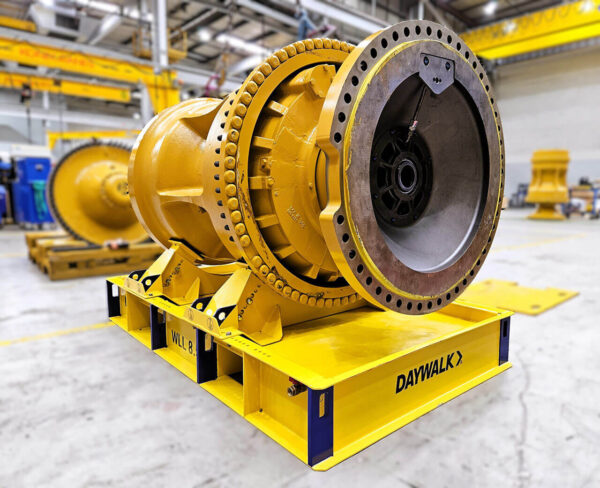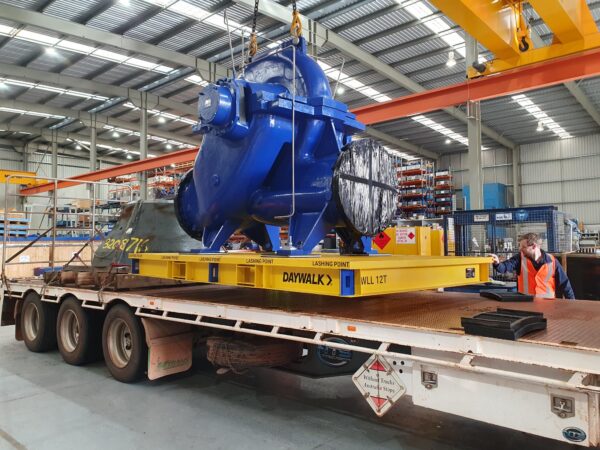At our recent Thought Leadership Forum, we heard from four preeminent heavy vehicle transport standards and compliance specialists from around Australia. Their expertise has been distilled in this blog and goes to the heart of DAYWALK’s mission – addressing the core principles of safety in transport engineering and making sure everyone gets home safely tonight.
Parties involved in the Chain of Responsibility
Chain of Responsibility (CoR) is governed by the Heavy Vehicle National Law (HVNL). It establishes that responsibility for ensuring safety and compliance in transport operations extends beyond drivers and operators to encompass all parties in the transport supply chain. This includes consignors, consignees, packers, loaders, scheduling staff and more. The CoR mandates that these parties must ensure their actions do not contribute to breaches of road transport laws, particularly concerning vehicle mass, dimension, loading, speed compliance and driver fatigue. By spreading responsibility, the CoR aims to enhance safety and accountability across the entire transport sector.
The reason is that “…drivers can only work with the vehicles, loads, information, facilities and time that’s available to them when they are transporting goods. If one of those things is missing or falls short it can be difficult for drivers to ensure compliance with the standards.” – Jennifer Rotili – Code of Practise Program Manager (NHVR)
As a result, safe load restraint under Heavy Vehicle National Law is a primary duty that belongs to all those in the CoR. This duty applies before, during and after transportation, and all parties are in breach of their duty if they fail to have systems in place to prevent danger. They must ensure safety so far as is reasonably practicable for road users, infrastructure and the environment, and do so proportionate to the potential risk (which in heavy vehicle transport is very high).
How to comply with CoR Primary Duty
For a company to comply with their primary duty, it must identify hazards and risks, find methods to control them that are reasonably practical and provide the equipment and training that enables the methods to be carried out. This includes:
- Choosing routes
- Recruiting and training staff
- Scheduling maintenance of vehicles
- How company Directors respond and monitor safety
- Researching restraint methods
- Safe scheduling and timing
- Securing and checking lashings before and after the transport
- Feedback and reporting
- Training in safety and loading
- Escalation pathways if something goes wrong
Who must comply with HVNL?
Compliance with HVNL is required for vehicles over 4.5t GVM that are operating within National Heavy Vehicle Regulator (NHVR) jurisdictions. Even though Western Australia and the Northern Territory do not follow HVNL in their own territories, “if you do come into our jurisdictions, you need to comply with our requirements.” Tim Brown – Senior Standards Development Officer (HVNR)
Vehicle loading compliance
In general, when considering mass, dimension and loading, your load must:
- Not make the vehicle unstable or unsafe
- Be secure so it’s unlikely to fall or be dislodged
- Be restrained using the appropriate method
- Meet loading performance standards
The 2018 Load Restraint Guide helps you comply with the load restraint standards, including 12 case studies to guide you. Applying these best practice methods will go a long way to confirming your method is appropriate.
Not doing so has resulted in catastrophic accidents, including a hydraulic cylinder that broke through a timber box it was being transported in. Had the transport vehicle in this case been involved in an accident, there would have been nothing to stop it from breaking through the back of the cab and potentially killing the driver.
Timber pallets and compliance
Timber pallets are the most commonly used system to handle a wide variety of loads. While they can be versatile and low maintenance, they come with limitations that lead to a shorter lifespan and eventual de-rating. These include:
- Vulnerability to damp and mould
- Flammable
- Nail damage
- Long-term storage wear and tear
When deciding if a timber pallet in its current condition will meet the transport performance standards, you need to be sure that:
- It is compliant and able to withstand the forces you want to put on it
- It is strong enough to prevent movement
- The restraints are dependable
- It can handle the performance standards at all points along the journey
The key message to remember is that “The restraint system is only as strong as its weakest member.” – Sam Kurian – Engineering Manager, Daywalk
National differences
There are some regulatory differences in Western Australia and the Northern Territory.
For example, “One of the first major differences is that the NHVR CoR regulations are only for vehicles above 5.4 tonnes, but in WA it’s for all vehicles. Therefore, if you are towing a trailer to the tip in your own car then you must operate in accordance with the legislation. This means there is no separate legislation with regard to loading for light vehicles.” Mick Wainwright – Acting Manager, Main Roads WA
In WA, this has sought to prevent many disastrous risks from recurring, such as was the case with attempting to transport a bobcat on the back of an open tray ute with a single strap.
While interstate drivers must obtain a WA permit to operate in WA, enforcement teams apply the same principles as used elsewhere in the country so that there is consistency in treatment on the roadside.
Is pallet certification a legal requirement?
Certification is not a legal requirement, so the onus is on all parties in the CoR to assess how they are going to manage the risks and the hazards. If you have a non-certified frame, can you be sure that your restraint method will hold your load? What have you done to reassure yourself that the device you are using can withstand the forces you intend to apply in transit? Essentially, to meet the legal requirements, you need to be able to demonstrate that the loading method you are using will meet the performance standards.
One way for complete certainty is to use certified transport systems, which will provide you with a failsafe way to demonstrate your HVNL primary duty compliance, while also having complete peace of mind that your chosen system will perform exactly as you need it to.
At DAYWALK, we believe that every life is precious. With this as our guiding principle, we create heavy industry transport and storage solutions that protect your assets and your people, going above and beyond the minimum requirements to create world-class structural and logistics engineering solutions.
Get in touch with us to discuss your heavy industry transport and storage needs on 1300 662 987 or complete the form and we will get back to you.
Contributors:
- Jennifer Rotili – Code of Practise Program Manager (NHVR)
- Tim Brown – Senior Standards Development Officer (HVNR)
- Sam Kurian – Engineering Manager, Daywalk
- Mick Wainwright – Acting Manager, Main Roads WA










